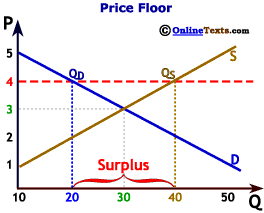Quote:
Originally posted by Superbelt
Unions caused huge leaps of employment in this country as their demands for pay and benefits fueled the greatest economy in the world. The opportunities afforded to the common man drew in the best and the brightest from around the world to work here because they knew that they would have a better chance to succeed under our systems.
Unions create jobs. Unions create the best jobs.
|
This premise is flawed on several levels. Instead of deconstructing your quote and addressing it piece by piece, I think we might instead benefit from a quick lesson in economics.
Unions, by design, act in a manner to reduce competition among laborers. In other words, they are anti-competitive. Their express purpose is to create labor market inefficiencies.
Unions accomplish this, in part, through "collective bargaining" tactics, which is much like collusion, except that it is considered legal and therefore unnecessary to keep secret. Essentially, through these means, a controlling majority of the suppliers of a specific good seek to limit its supply or institute and enforce a price floor on said good. In the case of unions, that good is labor. It is similar to the tactics employed by OPEC.
Again, technically it's not collusion because they don't make a secret of their conspiracy. But there's a word for that too. Coercion.
Quote:
|
Coercion n. - The practice of forcing to act in a certain way by use of pressure, threats, or intimidation
|
Threats of work stoppages or strikes are other coercive techniques employed by unions.
Again, none of this is opinion - it's plain fact, which union members and their sympathizers freely admit.
Now let's explore how these tactics impact the supply and demand of labor.
Obviously we'll have to keep it simple, as this topic alone could fill a book. Nonetheless, we should cover some basics.
I assume that you are at least high school educated and you know what a supply curve and a demand curve look like (remember - price on the vertical axis, quantity on the horizontal axis). Where these curves intersect is where, in a free market, your equilibrium price will be established. If we're talking about the supply of labor, we're faced with a relatively inelastic supply curve. In other words, one can't simply produce more labor by, say, breeding workers, nor can one easily reduce supply by killing them. So, in the short term (excluding long term demographic trends), the supply curve remains pretty much constant.
The demand curve for labor, however, is much more elastic. It is influenced primarily by output per unit of labor, and the marginal revenue analysis. In other words, the degree to which an employer can increase revenue per additional associated increase in costs of production will impact that employer's demand for labor. Changes in this variable precipitate a movement along the demand curve. This is important, because the marginal revenue analysis is impacted also by the marginal demand of the good being produced. The healthier the economy, the wealthier the consumer, and the wealthier the consumer, the higher the marginal demand for most goods. The higher the marginal demand for goods, the higher the marginal revenue for production. The higher the marginal revenue, the higher the demand for the labor required to produce that good. Basically, this is why a strong economy creates jobs. It's self-reinforcing.
Anyway, the demand curve for labor can also shift (a shift in the demand curve itself, as opposed to a movement along the curve). It can shift whenever a large consumer of labor develops or employs new technologies or methods that reduce the amount of labor required per unit of output. In the eighties, you may recall, labor unions in the automotive industry fought the modernization of assembly lines, which employed new mechanized processes. Laborers feared that this new technology would shift the demand curve to the left. To the layperson, this meant that people would be replaced by robots and wages would fall. Now, what actually ended up happening is that through innovation and growth, laborers found even higher paying jobs at the factories making the robots, but that's another story.
So, before we get too carried away with this lesson in macro-economics, let's get back to the topic of unions. If you're still unclear on supply and demand, please follow this link:
http://www.econweb.com/MacroWelcome/sandd/notes.html
Now, unions create a kink in the supply curve in an effort to raise the price of labor, or create a price floor for labor. As we already established, they do so through anti-competitive practices and coercion. The figure below illustrates graphically the concept of a price floor set above the equilibrium price.

You may notice that this graph also depicts a surplus. The surplus in this case is labor. A surplus of labor is high unemployment.
Again, not conjecture, but simple economic fact.
I don't think I need to explain how price floors on labor and the associated increase in unemployment is a bad thing for productivity, profitability, wages, prosperity, and economic growth. It's pretty apparent already.